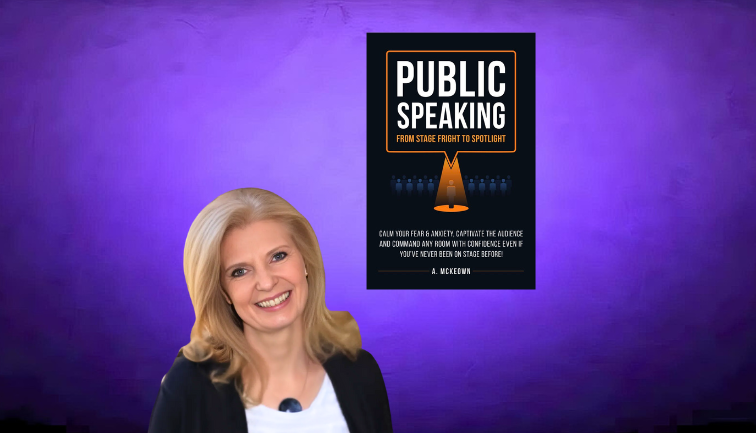Since leaving corporate, I have done little in-person presenting.
It’s a muscle that has become weak. There was already plenty of room for improvement!
So I was delighted when Anne McKoewn told me she was publishing a book on public speaking.
I eat books for breakfast. ![]()
I first met Anne some years ago at Salsa classes.
About a year ago, I discovered Anne in my business network as an award winning business owner and respected business and life coach.
When I started Salsa dancing, it was difficult. Now it is easy.
There will always be more to learn, it just takes practice.
I know the same is true for public speaking.
Right now, I’m a beginner and there is lots to learn.
But with the right instruction and guidance, just like Salsa, it is just a matter of time before this becomes comfortable and easy.
Back to the book.
When I reflect about my concerns about public speaking, a big fear I have had is about remembering all the key points.
Then I read the chapter about “finding your voice”. This is about your unique communication style.
For me, its stories. Once I start telling a story, I can easily remember all the details.
So when I reflect on this book, my key learning is to think about what stories I can weave together for a presentation – I know that style works for me.
When I think back to corporate presentations, quite often, even with a large audience, I would know many of the people there and so that would make me feel relaxed.
I knew what content would resonate with them. I felt like I was talking with friends (many were).
So another great tip is to research your audience, what do they like? If you can spend time getting to know some of the audience before you present, that will certainly help break the ice.
Great book, thanks Anne.
Here were my key take-aways:
1. Conquering Fear
Fear of public speaking is common, but it can be managed through techniques like reframing anxiety as positive stress and using relaxation methods.
Understanding the root causes of anxiety helps in overcoming it.
2. Crafting Compelling Content
Effective speeches require clear, well-structured content.
Speakers should focus on their core message and align their presentation style with their strengths, whether storytelling, simplifying complex ideas, or inspiring others.
3. Body Language and Nonverbal Communication
Nonverbal cues such as eye contact, body posture, and gestures play a critical role in engaging the audience and reinforcing the message.
4. Vocal Techniques
Voice modulation, pitch, and pacing are important tools to keep the audience’s attention and enhance the impact of the speech.
5. Find Your Voice
You have your own unique way to speak.
Share your personal stories, be real, and people will listen.
Don’t try to copy others.
Be yourself, and your words will have more power.
6. Engage Your Audience
Ask questions, use humour, and get the audience involved.
Make them feel like part of the conversation.
7. Smart Use of Visuals
Use slides or pictures to support your message, but don’t rely on them.
Your voice is the main event.
8. Adapt to Your Audience
Speak in a way that fits the group you’re talking to.
Know their needs and adjust your speech to connect with them.
9. Keep Growing
Continuous improvement through practice, seeking feedback, and refining skills is essential for long-term success as a speaker.
Talk soon,
Lloyd
PS – Need some help with Teams and Systems? Let’s chat.








